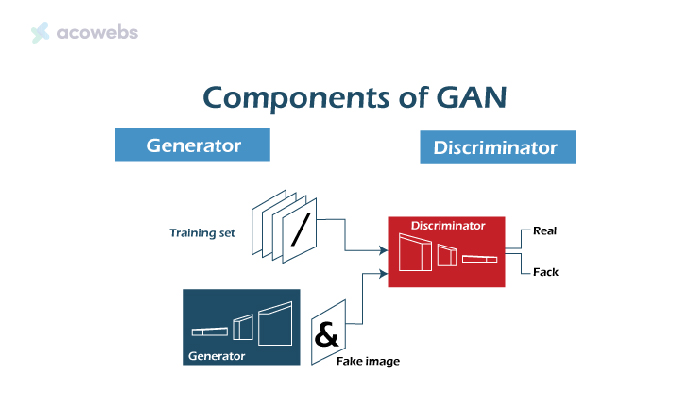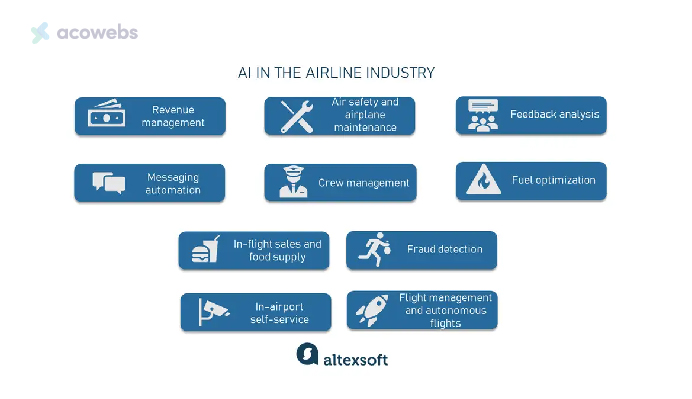Table of Contents
In today’s fast-paced eCommerce world, there’s one game-changing technology that’s shaking things up: generative Artificial Intelligence (AI). This innovative technology isn’t just another fancy tool; it’s fundamentally changing how businesses connect with customers, streamline operations, and boost sales.
Generative AI is transforming the whole internet shopping experience. It makes those awesome virtual shopping trips and product ideas that you love. It is like the best new AI magic. It makes life easier for businesses and shoppers.
And get this! Not just big companies use it; even small online stores are doing it too. This article is all about how generative AI is transforming the eCommerce industry. What cool uses does it have? What great perks does it bring for everyone?
What Is Generative AI?
Generative AI algorithms are frequently trained on large datasets that contain pre-existing instances in a particular domain, such as facial photo collections, language literature, or musical compositions.
These algorithms are able to generate new content that, when trained, shows astonishing levels of uniqueness and realism while yet resembling the training samples.
Some common examples of generative AI include:
1. Generative Adversarial Networks (GANs)

The most common type of neural networks in use today are generative adversarial networks. GANs consist of a discriminative and a generative network that competes against each other during training.
For instance, the generator generates fresh examples, such as photos, while the discriminator tries to tell whether they are fake or real. With time as both networks improve, more realistic content is produced through this process of adversarial training.
2. Variational Autoencoders (VAEs)
Text and images, among other things, can be encoded and decoded by variational autoencoders. This is achieved by first getting a compressed representation of the input data, also known as latent space.
Then samples from this latent space are taken by VAEs which on the other hand decodes these data into meaningful outputs that make sense.
3. Recurrent Neural Networks (RNNs)
When managing sequential records like text or time-collection records, recurrent neural networks are available because they are designed mainly for this purpose.
Due to their recurrent connection which allows them to save facts approximately preceding inputs, they perform well in tasks consisting of language modeling, text technology, and handwriting synthesis.
4. Transformer Models
Transformer models, like the Generative Pre-trained Transformer (GPT) collection of OpenAI, have become well-known for their ability to produce content that is both logical and contextually relevant.

These models are able to generate highly realistic and contextually appropriate text for a range of tasks, including dialogue generation, text summarization, and language translation, by utilizing self-attention processes to capture the links between words in a phrase.
5. Deep Convolutional Generative Adversarial Networks (DCGANs)
DCGANs are an extension of GANs specifically designed for generating images. They use convolutional neural networks (CNNs) in each generator and discriminator networks to process image data, allowing them to generate high-resolution-decision images with realistic details.
DCGANs have been successfully used for tasks such as image synthesis, image-to-image translation, and super-resolution.
Ways Generative AI is Transforming the eCommerce Industry
1. Personalized Recommendations and Tailored Marketing Strategies
Generative AI systems use diverse input data like purchase records, browsing behavior, demographics, or social media activity to create highly personalized recommendations tailored to specific customers.
For example, Netflix’s generative AI suggests movies and shows based on viewing history which enhances the streaming experience for users.

Spotify employs this AI technology to design user interfaces that adapt according to each person’s preferences making it easier for them to navigate through the app; thus improving overall customer satisfaction.
This AI also personalizes marketing messages in a way that resonates with individuals, leading to higher engagement and conversion rates.
This fosters deeper connections between businesses and their clients, cultivating loyalty and driving increased sales. By tailoring shopping experiences to individual needs and desires, businesses can provide highly relevant and captivating interactions, further enhancing customer engagement.
2. Visual Search and Virtual Try-On Technologies
The use of visual search is made possible by generative AI algorithms that process images uploaded to a platform and match them with similar products in the company’s catalog so that customers can find what they are looking for easily.
An example of this is Pinterest, which uses generative AI to enable its users to locate items that look alike with those present in the photos they upload.

Virtual try-on technology, on the other hand, applies generative AI in overlaying clothing, accessories or makeup onto pictures or videos of individuals who then get to see how these items would look on them before making any purchase.
This creates an immersive experience that boosts confidence among users while also reducing returns thereby driving up sales numbers as well as customer satisfaction rates.
3. Content Generation
In terms of content generation for eCommerce platforms, such systems have automated different kinds of content, such as product descriptions, reviews, blog posts, and social media updates.
Through analyzing available information together with patterns within it, these algorithms produce accurate, informative texts that are highly valuable to businesses since they can be produced faster than humans could write them but still remain engaging throughout their length.
For example, Alibaba uses algorithms like this one to automatically create descriptions for the millions of products listed on its platform. This simplifies the listing process for sellers and ensures that each product has a detailed description that will attract potential buyers.
Another thing that the AI does is produce authentic and persuasive customer reviews which enhances trust and credibility in products. It can also make blog posts or social media content that sounds just like the brand would write it themselves, which drives engagement and fosters stronger connections with customers.
Therefore by generating content through generative AI systems, eCommerce platforms are able to maintain a dynamic online presence; keep storytelling compelling enough to attract new customers while still engaging those who have been around. This leads to loyalty, increased sales, and revenue growth.
4. Dynamic Pricing
eCommerce generative AI algorithms are transforming price strategies through real-time analysis of rival pricing, market trends, and customer behavior. This enables companies to maximize revenue and maintain competitiveness by optimizing their pricing strategies.
Airlines, for instance, use it to modify ticket costs according to variables including demand, departure schedule, and rivalry pricing.

Prices may go up to take advantage of favorable market conditions during the busiest travel seasons or when demand is high. On the other hand, in order to increase demand and fill available seats, rates might be decreased during off-peak hours.
When businesses utilize dynamic pricing strategies powered by generative AI, they can effectively optimize revenue while offering competitive prices that resonate with market conditions and customer preferences.
5. Supply Chain Optimization
Supply chain optimization consists of order processing, inventory management, and demand forecasting. Artificial intelligence algorithms offer correct predictions with the aid of analyzing beyond statistics in conjunction with outside variables together with weather and monetary signs.
Companies can use these projections to expect modifications in call for and alter stock accordingly.
Walmart, for example, makes use of generative AI algorithms to predict demand throughout more than one place, allowing greater green stock control and decreasing inventory or overstock troubles.
This will increase customer delight and retention through ensuring they can get the products they need after they want them. Additionally, by identifying the most efficient routes for delivery, generative AI optimizes logistics, thereby reducing costs and lead times.
Companies like UPS are using AI-powered generation to lessen gasoline costs, improve typical operational efficiency, and optimize distribution channels.
Businesses that utilize generative AI to optimize supply chains by guaranteeing that goods are available where and when needed can save costs, expedite processes, and boost customer satisfaction.
6. Chatbots and Customer Support
Generative AI enables AI chatbots to understand the nuances of language, enabling them to appropriately interpret client questions and provide suitable responses.
This capacity to sense context and temper extends past simple keyword fits, permitting chatbots to engage in meaningful conversations with customers.
AI-powered chatbots can supply personalized ideas primarily based on consumer preferences and past interactions, improving the shopping experience. For instance, a clothing store’s chatbot can base style tips based totally on a purchaser’s choices and seasons.
In addition, chatbots powered by using generative AI can handle a variety of responsibilities inclusive of order processing, cargo monitoring, and handling returns or refunds without human intervention. This keeps customers and businesses independent and ensures consistent and efficient support 24/7.
7. Creative Design and Product Innovation
Generative AI tools are reworking the creative process and innovation by allowing designers and developers to discover thoughts faster and more successfully. These algorithms facilitate the generation of new designs, fashions, and designs and accelerate product improvement.
Companies like Autodesk use generative AI algorithms to make hundreds of layout changes based on distinct standards and constraints. Designers can then examine those adjustments and perceive opportunity solutions that meet the favored values.
Generative AI also simplifies the prototyping process by robotically producing 3-D models or virtual prototypes primarily based on layout specs. This permits artists to quickly give you and reproduce designs, decreasing the time and value related to traditional prototyping methods.
Generative AI algorithms can analyze marketplace trends, purchaser reactions, and competitor products to perceive possibilities for innovation. By integrating these insights into the design technique, companies can create merchandise that meets unmet needs and stand out in the marketplace.
8. Fraud Detection and Security
Generative AI has transformed fraud detection and security processes since it can now identify patterns and anomalies in transaction data more accurately.
These systems use powerful algorithms to investigate big amounts of statistics in actual time, facilitating the detection of fraudulent activities with accuracy and pace.
For instance, financial institutions are using generative AI algorithms to take a look at trading records, flagging suspicious styles along with unusually massive transactions, uncommon spending, or transactions from unknown assets.
By continuously getting to know new information and adapting to evolving threats, those AI-powered fraud detection systems can stay ahead of state-of-the-art fraudsters, informing corporations and consumers of safety breaches.
Advantages of Generative AI in eCommerce
The eCommerce industry has transformed thanks to the adoption of generative AI, which offers several benefits that companies may take advantage of to prosper in the current competitive environment. They include:
1. Personalized Marketing and Customer Experience
Generative AI assists businesses in developing product suggestions and marketing campaigns that are tailored to the preferences of individual customers by evaluating vast volumes of consumer data.
This tailored approach enhances the overall customer experience, boosts conversion rates, and fosters customer loyalty. Customers feel appreciated and the business’s relationship is reinforced when they receive tailored advice.
2. Operational Efficiency and Cost Reduction
With the help of generative AI, organizations can instantly adjust their plans by gaining insights into consumer behavior and industry trends.
Maintaining an advantage over competitors and adapting to changing market conditions require this flexibility. Businesses get to stay competitive and serve better the evolving requirements of their clientele by utilizing AI-driven insights.
3. Competitive Advantage and Adaptability
To keep ahead of the competition, firms can use generative AI to study consumer behavior and industry trends. Real-time strategy adaptation enabled by AI-driven insights allows organizations to stay ahead of changing consumer preferences and market dynamics.
To be competitive in the ever-evolving eCommerce market, you need to possess this agility and vision.
4. Enhanced Product Discovery and Recommendation Systems
Generative AI powers highly tailored product suggestions by excelling at comprehending user preferences and behavior. AI algorithms swiftly and easily direct users to pertinent products by examining browsing history and buying trends.
This enhances the shopping experience and increases the likelihood of conversions and repeat purchases, driving revenue growth.
3. Dynamic Pricing and Inventory Management
AI powered dynamic pricing strategies adapt in real-time to competitor prices and consumer demand. Businesses can maximize profitability while preserving competitiveness by optimizing pricing techniques through the analysis of past data and marketplace developments.
Additionally, it helps with predictive inventory control, lowering the want for added stock and stockouts while increasing supply chain effectiveness. Higher profitability, better purchaser happiness, and a stronger role in the market are the outcome of this.
Disadvantages of Generative AI in eCommerce
While generative AI offers numerous advantages in transforming the eCommerce industry, it’s essential to acknowledge and address potential disadvantages and challenges:
1. Ethical Concerns and Bias
The quality of generative AI systems depends on the data used for training. If the training data reflects specific societal attitudes or contains biased information, AI models may inadvertently reinforce or magnify these biases.
This may result in discrimination or unjust treatment when it comes to suggestions for products, charges, or employment selections. In order to guarantee equity and moral application of AI systems, biases must be addressed and mitigated.
2. Privacy and Data Security Risks
Data security and privacy are issues brought up by generative AI’s massive collecting and processing of consumer data. Negligent management or unapproved entry to confidential client data may result in violations of privacy laws, penalties, and harm to a company’s reputation.
In order to maintain customer trust and reduce security threats, businesses need to carefully consider implementing strong data protection measures and adhering to data privacy legislation.
3. Dependency and Overreliance on AI
Dependency problems may arise from depending too much on generative AI for essential business tasks. AI systems may experience serious financial losses or reputational harm if they have mistakes or malfunctions that interfere with operations and decision-making processes.
Retaining human supervision and intervention skills is crucial for reducing the risks related to AI dependence.
4. Lack of Transparency and Explainability
It can be difficult to decipher the logic behind AI-generated results or comprehend the underlying decision-making processes of generative AI models since they frequently function as “black boxes.”
When AI-driven judgments impact people’s lives or livelihoods, the lack of explainability and transparency can undermine confidence and accountability. Building acceptance and confidence in AI systems requires improving their interpretability and openness.
5. Skill Gaps and Workforce Displacement
The adoption of generative AI may require businesses to reskill or upskill their workforce to effectively leverage and manage AI technologies. Additionally, AI automation may lead to the displacement of certain jobs or changes in job roles, potentially causing workforce disruption and socioeconomic challenges.
Addressing skill gaps and supporting workforce transitions is essential to ensure a smooth and inclusive transition to an AI-powered eCommerce landscape.
Conclusion
Generative AI is at the forefront of transforming the eCommerce industry, ushering in a new era of personalized marketing, operational efficiency, and enhanced customer experiences.
Leveraging advanced algorithms empowers businesses to deliver tailored recommendations, facilitate intuitive visual searches, and implement dynamic pricing strategies, thus driving higher engagement and sales conversion rates.
It streamlines content creation processes, optimizes supply chain operations, and strengthens security measures, ensuring seamless and secure transactions for consumers. Despite its remarkable transformative potential, generative AI also brings forth ethical considerations, privacy challenges, and workforce adjustments that demand careful attention.
With its capacity to foster innovation, agility, and adaptability, generative AI promises to open up new avenues for growth and differentiation in an ever-evolving digital environment.
Acowebs are the developers of the WooCommerce Product Labels which let customers include custom product labels or product badges for the WooCommerce products. WooCommerce sales badges plugin provides you with different label styles and customizations for labels. It offers a easy-to-use UI to add labels to the selected products or categories.











 Login
Login
 Cart
Cart








